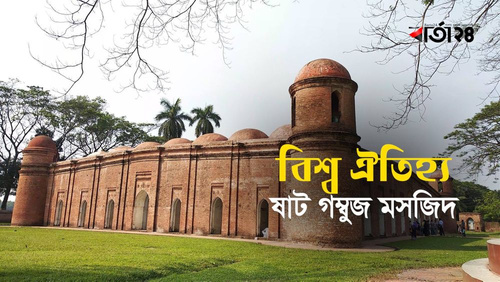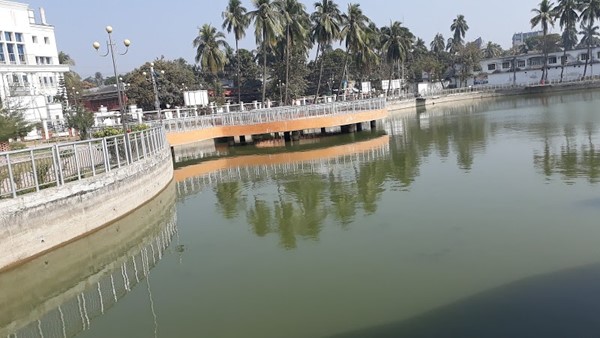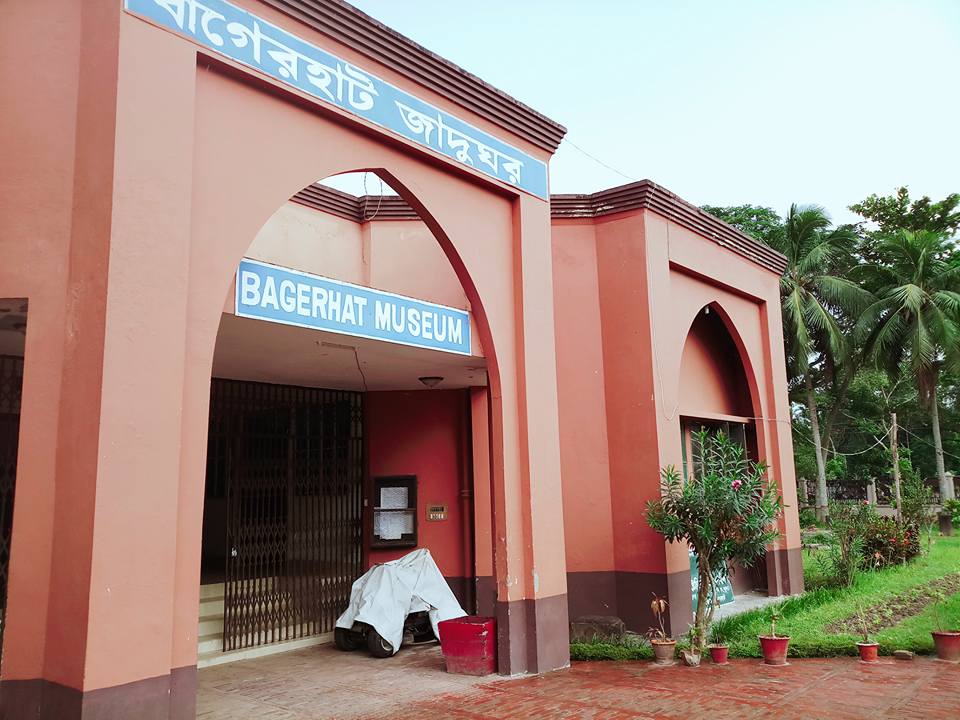Visiting the Shat Gambuj Mosque, Bagerhat Khulna

The Shat Gambuj Mosque
The Shat Gambuj Mosque is a UNESCO World Heritage Site and one of the topmost tourist attraction in Bangladesh. It is one of the largest historical mosques of the Sultanate period. The great Ulugh Khan Jahan established this mosque three miles west of the present Bagerhat town. This serene and imposing monument stands on the eastern back of an enormous sweet-water-tank. The mosque is famous for its sheer size and architectural beauty. The archaeological elegance of it enthralls the tourists even now. The simple look of this aristocratic structure with its absolute plainness but solid shape reflects the potency and simplicity of its designer. Besides using it as a prayer hall, Ulugh Khan Jahan used the mosque as his assembly hall. Beside this mosque, there is an archaeological museum where you can find different archaeological and historical materials of that time.
History:
The construction of the Shat Gambuj Mosque began in 1442 and it was completed in 1459. Turkish General Ulugh Khan Jahan established a city at the meeting place of the Brahmaputra and Ganges River in the 15th century named Khalifatabad in the suburb of the present Bagerhat town. The planning of this city was exclusively governed by Islamic architecture and the embellishments were a combination of Mughal and Turkish architecture. It housed some of the most important buildings of the preliminary period of the development of Muslim architecture in Bengal. Khan Jahan adorned this city with innumerable mosques, water tanks, roads, mausoleums, bridges, and other public edifices. Baked bricks were used to make these structures. Among the structures the Mosque of Singar, Bibi Begin and Chunakhola, the mosque of Reza Khoda, Zindavir and Ranvijoypur are mentionable.
Style:
Shat means 60 and Gambuj means dome. The name Shat Gambuj Mosque means a mosque with 60 domes but the exact number of the dome is 81. The mosque has 60 pillars that support its roof with 77 squat domes including 7 four-sided Bengali domes in the middle row. There are four towers at four corners that have smaller domes on their top. Among the towers, two were used to give azan (call for prayer). It is thought that Khan Jahan built this mosque in resemblance to Bibi Khanam mosque of Uzbekistan. The length of the mosque is 160 feet while the width is 108 feet.
The mosque bears the delicate artistry of the 14th and 15th centuries. The massive prayer hall with eleven arched doorways on east and 7 each on north and south for ventilation and light creates a dark and somber appearance inside. It is separated into seven longitudinal aisles and eleven dense bays by 60 narrow stone columns. These columns support the curving arches made by the domes. The mosque’s wall is unusually thick (about 6 feet). The inner side of the west wall has 11 mihrabs (the bay in the mosque pointing towards Mecca) that are adorned with stonework and terracotta. The whole mosque is built with red burn mud or bricks.
See:
Ghora Dighi:

Saint Ulugh Khan Jahan dug many ponds in the Bagerhat area. Ghora Dighi is one of them. This massive water reservoir is located on the west side of the Shatgambuj Mosque. Khan Jahan conquered this region and preached Islam here. At that time there was a severe scarcity of drinking water in this area. To solve this problem, he excavated this enormous water tank near the mosque. Since then, Ghora Dighi became the sheer source of drinking water for the inhabitants of this area.
There are several stories about the naming of Ghora Dighi. According to hearsay, Khan Jahan measured the tank riding on a horse. Thus the tank got its name. Other sources said that horse race used to take place here and many horses were tied on the bank of this tank. For this reason, people began to call it Ghora Dighi. There are many crocodiles in the pond and they will never harm you even if you touch them. Many people come here every day with offerings to make their wishes fulfilled.
According to hearsay, Khan Jahan measured the tank riding on a horse. Thus the tank got its name. Other sources said that horse race used to take place here and many horses were tied on the bank of this tank. For this reason, people began to call it Ghora Dighi. There are many crocodiles in the pond and they will never harm you even if you touch them. Many people come here every day with offerings to make their wishes fulfilled.
Museum

This museum is situated at the southeastern corner of the Shat Gambuj Mosque. It was built in 1995 with the help of UNESCO’s fund to conserve the retention of Khan Jahan and the Muslim culture and architecture of this area. The museum exhibits all the artifacts collected from the whole Bagerhat region. It has three galleries where numerous remains of Islamic cultures and many plaques of ancient times are shown. To understand the time of Khan Jahan, the museum is a must to visit.
How to Go:
The road distance between Dhaka and Bagerhat is about 437.3 km. You can go to Bagerhat by bus. Both A/C and non-A/C bus services are available. It takes about 7.30 hours to reach in Bagerhat from Dhaka.
Where to stay:
Bagerhat town lacks of decent hotels and restaurants. There are only a few hotels with simple accommodation with limited facilities and moderately good services where you may consider stain in. As Khulna is a short bus ride away from Bagerhat, it’s wise to visit Bagerhat as a day trip.
Food:
There is a lack of good restaurants in the city. In only a few restaurants you can satisfy your hunger. There is no signature food of this locality that can be enjoyed by the tourists. In the restaurants Bangladeshi food is served. For snacks there are many fast food shops beside the roads.
Drinks:
You can buy mineral water and different types of cold drinks from the nearby shops. No hard hard drink is available.
